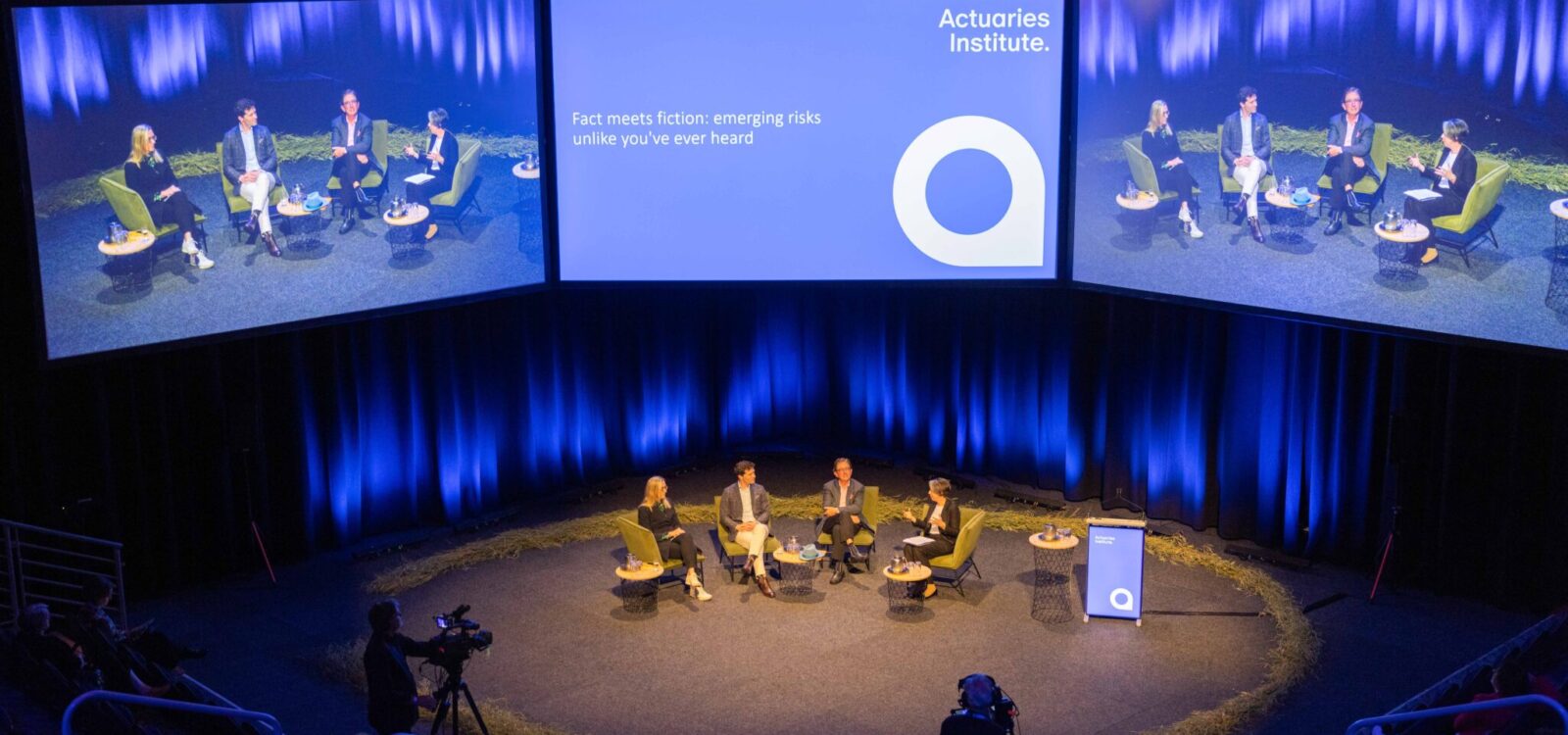
The Risk Horizon
Understandably, actuaries are obsessed with risk.
Three plenary sessions at the All Actuaries Summit reminded us that there are different ways to look at risk – and that sometimes the widest possible view is the best.
Opening Keynote with Ann Sherry AO
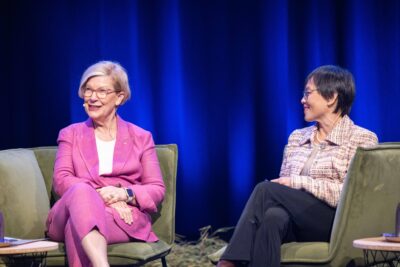
In a wide-ranging interview with Win-Li Toh, Ann Sherry called out the range of risks facing leaders today and emphasised the speed with which those issues – such as a supermarket price gouging inquiry – can surface.
Ms Sherry believes many of these risks can be understood via ESG principles, but she suggested that perhaps there’s been too much emphasis on the E in the past. On the ‘G’, Ann explored the governance problems of the NDIS, a topic on which she is well-versed, having served on the Productivity Commission’s advisory group for the NDIA and having a son who qualifies for NDIS.
“There’s a huge number of issues that people here are dealing with which is why the cost blowout is so extreme politicians can’t bear to say no… if you put a pot of money in the middle of a room, everybody works out how they get to it, whether that’s what was what it was designed to do or not.”
When viewed as a total cohort, Ann believes ESG is the dominant risk everyone is thinking about. The other dominant risk? Technology.
As a Non-executive Director at NAB, Ann has had to peruse 100 pages of board papers just on technology! Data security and privacy, the use and reliability of data and regulation are all issues being discussed at great length across the varied businesses and organisations Ann is a part of.
Yet Ann also drew out the opportunities of new technology; specifically, the power to customise offers to individuals. From a customer-centric lens, data can be used to see their vulnerability and understand what they need.
Nodding to the session theme, Ann called on the audience to think bigger so that we can turn the changes coming towards us into positives rather than threats. “We all need to think bigger. There’s something about everyone getting out of their boxes because if we all stay sitting in our boxes this mess is going to continue…”
Fact Meets Fiction: Emerging Risks Unlike You’ve Ever Heard

In a session chaired by Vanessa Beenders, Institute EGM of Public Policy and Professionalism, John M Green expanded on the human focus of risk. Actuaries, he said, need to recall that their work and training is “largely about technical prowess, analysis, logic, rationality, numeracy.” But real life is not rational and logical and that’s why, John argued, his work as a writer of thrillers make him a better director.
He believes there is value in being able to think like a bad person, as it allows you to see challenges and risks differently.
John reminded the audience that the US intelligence community missed the threat of 9/11 not due to lack of expertise or effort but because – as the official inquiry concluded – “of a lack of imagination.” Citing a Harvard Business Review article by Gary Klein, John spoke to the power of a ‘pre-mortem’ in mitigating risk.
“You actually do a pre-mortem in an organisation before you start the project. Before you finalise the design of the product, before you do the transaction. And what you do is you say, ‘we assume it will fail. Why could it have failed?’ And, therefore, you’re giving yourself the licence to ask those really dumb questions.”
Questions that, in turns out, are not so dumb at all.
Professor Alan Duffy, like many speakers at the Summit, was keen to dive into the two-sided nature of today’s technologies – the risk and opportunity they contain. He outlined some truly scary stories and scenarios around deepfakes and digital scamming at both a personal and geopolitical level.
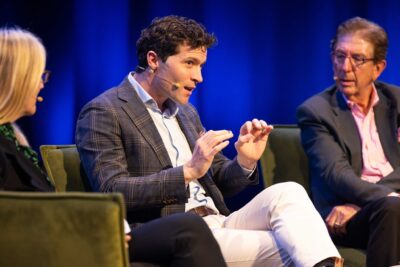
“My worry here is, as we take advantage, rightly, of the productivity gains and the incredible profits that the latest in space and AI technology presents us, are we allowing ourselves sufficient friction in the systems to be resilient to the changes and the weaknesses that they present?” Alan said. “As actuaries I hope you know how to price that decision.”
Finity’s Estelle Pearson rounded out the session by listing some of the risks she’s had to manage in her exceptional career, ranging from asbestos to global pandemics. She reminded the audience that neither of these risks were in any way “black swans”; they were long known and well understood.
To effectively mitigate risk, Estelle said, we need to not only see the risk but do something about it. She cautioned actuaries that due to being based on past data, our models are going to be wrong as new risks are, well, new, and existing risks are accelerating very fast.
To manage multiple, complex risks, actuaries must master the art of working with experts across many fields.
“We need to be part of multidisciplinary teams…We need to have diverse thinking, different types of thinking. And we need to have challenging thinking,” said Estelle.
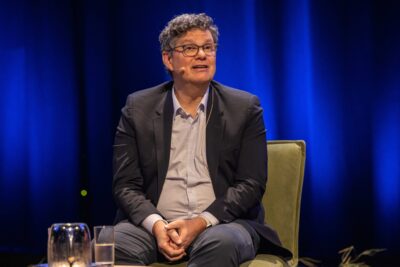
Knowing Your Risk Can Change Your Future: The Fight Against Hereditary Disease
Professor David Thomas delighted his actuary audience by explaining the power of genetics with some really big numbers: “…there are about 70 trillion cells. Each cell contains a blueprint that defines exactly who we are and not just as we are today. It also looks forward 50 years potentially and determines how we evolve.”
Our understanding of genetics has extraordinary implications and over the past 20 years that understanding has increased spectacularly thanks to “the influence of artificial intelligence, computing power, telecommunications and e-mail.”
Professor Thomas says the implications of this revolution – for healthcare, insurance, the very nature of illness in human beings – are vast. “I think it’s really exciting,” he said, “because there is no body of people in our community better placed to work out the practical consequences: at a social and personal level, at a financial level, and of the medium and long term risk, than an actuarial body.”
QBE’s Jessica Chen, GM Financial Performance at QBE and Chair of the Institute’s Genetic Working Group, canvassed some concerns about the predictive power of genetic testing. “We do know that advancement in genetics will have a profound impact for health and life insurance industry in the years to come,’ she said. “But we also are hearing that customers are concerned. Because they still want to be able to access insurance even if they have a high genetic risk.”
Jessica Chen issued another call to the actuarial profession, challenging it to work with companies to design products that meet both the sustainability of the industry and customer needs.
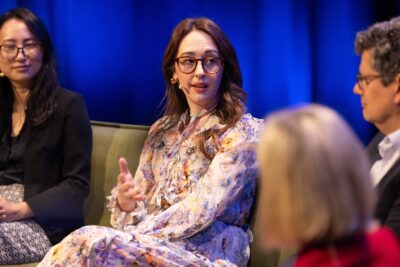
The story told by Krystal Barter demonstrated the power and potential of genetic testing in living colour. In a Sixty Minutes video segment that visibly moved many in the audience, Crystal shared the fear and “sense of doom” that affected her because a genetic flaw means her family has suffered three generations of breast cancer.
“I felt that my breasts were going to betray me,” she said. After testing for the gene, Krystal was able to have an operation to remove all the tissue that put her at risk, leaving her with a less than a 1% chance of getting breast cancer.
“I want to see a generation that has a test while they’re well,” said Krystal, “and then can implement strategies in their life that can reduce that risk and live longer, healthier lives.”
CPD: Actuaries Institute Members can claim two CPD points for every hour of reading articles on Actuaries Digital.






